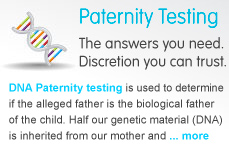






HPV is the name given to a group of viruses that includes more than 100 known types. There are over 50 viral types that are known to infect the genital tract. Presently, HPV infection is the most known sexually transmitted disease worldwide estimated to be present in at least 50% of sexually active males and females. HPVs selectively infect the skin and mucous membrane's epithelium. The infection may be asymptomatic, produce warts or is even associated with a variety of benign and malignant neoplasms.
Why is HPV testing important?
Most infected persons are unaware that they are indeed infected, yet they can still transmit the virus to their sexual partner.
Low risk HPVs are those types (6, 11, 42, 43, 44) that may cause changes on PAP smear but do not progress to cancerous changes.
High risk HPVs (16, 18, 31, 33, 35, 39, 45, 51, 52, 56, 58, 59, 68) may also cause changes to PAP smear but rarely progress to cancer.
Thus HPV status and information about viral type(s) involved in the infection have important clinical significance.
HPV DNA Testing
It is advised that any abnormal or borderline smear test results should be tested for HPV DNA. The presence of koilocytes in the smear test is indicative of an HPV infection. HPV DNA testing together with PAP smear is a very useful tool for the prevention of cervical cancer.
Test Methodology
MLSBioDNA Ltd is offering HPV DNA testing by PCR. DNA is extracted from a cervical brushing and amplified by PCR using a set of primers that detects a very wide range of HPV types. When compared to other sets of primers, it was shown that these primers are more sensitive in detecting a wider range of viral types [1]. If a test is positive, identification of the viral type is done by direct DNA sequencing.
Results
The test result is issued within 10 days after receipt of sample.
A positive test result indicates HPV infection but does not mean that the person is going to develop cancer. Further testing (biopsy or colposcopy) can be suggested by the physician especially if cellular changes were reported by cytology.
A negative result does not exclude completely the possibility of a HPV infection. False negative results can result due to very low levels of infection, sampling errors or due to the presence of a different HPV type other than those that are detected by the system. Testing should be repeated for those individuals having cellular changes but a negative HPV test.
It was shown that a significant number of patients diagnosed with koilocytosis and CINI did not in fact have HPV infection [2]. Besides this low grade lesions can regress spontaneously. Also koilocytosis was reported in CMV infection in the absence of an HPV infection, showing that similar cellular changes can be caused by other viral infections [3].
References
[1] Fuessel Haws AL, He Q, Rady PL et al. Nested PCR with the PGMY09/11 and GP5(+)/6(+) primer sets improves detection of HPV DNA in cervical samples. (2004) Journal of Virological Methods 122: 87 - 93.
[2] Abadi MA, Ho GYF, Burk RD et al. Stringent criteria for histological diagnosis of koilocytosis fail to eliminate over diagnosis of human papilloma infection and cervical intraepithelial neoplasia grade 1. (1998) Human Pathology 29: 54 - 59.
[3] Daxnerova Z, Berkenova Z, Kaufman R & Ervin A. Detection of human cytomegalovirus DNA in 986 women studied for human Papillomavirus associated cervical neoplasia. (2003) Journal of Lower Genital Tract Disease 7: 187 - 193.










